CRE Companies Mind Their ESGs
Owners, developers and managers are ramping up environmental, social and governance initiatives to meet investor criteria and internal goals.

Boston Properties’ LEED Platinum Salesforce Tower in San Francisco is currently the highest LEED-rated skyscraper in California.
Research shows that the majority of institutional investors globally now employ an environmental, social and corporate governance strategy to guide their investment decisions. The top commercial real estate developers, owners and managers are embracing the ESG trend with quantifiable initiatives and dedicated staff that make their companies and portfolios more responsible, sustainable, resilient, and profitable–and more attractive for institutional capital.
“People will increasingly have to be able to talk the language and demonstrate performance in these areas alongside traditional financial performance,” said FTSE Russell head of ESG for the Americas Tony Campos.
Among the leaders of this movement is global industrial developer and owner Prologis, which began building its sustainability program more than a decade ago with a dedicated ESG officer. In an effort to further elevate its comprehensive ESG program, which ranges from initiatives like solar rooftops to community outreach, last year the publicly traded company aligned its ESG group under its chief legal officer and general counsel who reports directly to its CEO, noted Prologis ESG head Jeannie Renne-Malone.
The focus on ESG has yielded results. So far, Prologis is on track to meet its 2020 goal of generating 200 megawatts of rooftop solar energy―enough emissions-free energy to power approximately 27,500 average-size U.S. homes annually, said Renne-Malone―and it’s currently exploring renewable energy storage batteries at certain sites.
Picking up on the social piece of the equation, last year Prologis launched a community workforce initiative in Los Angeles and Miami to address the labor shortage concern of its customers in the logistics field by partnering with community organizations to provide training, skills development and job placement, said Renne-Malone. The program will expand into several new markets in 2019.
Another Prologis initiative that’s been generating a lot of buzz is Georgetown Crossroads in Seattle, the first multi-story warehouse in the U.S., a three-level, 590,000 square-foot facility located minutes from downtown.
Previously, companies built warehouses in remote locations to optimize solely for costs. That’s no longer a best practice, with next-day delivery evolving into same-day and one-hour delivery. “As a result, companies will have to operate these high-quality buildings in prime locations that enable efficiency and rapid delivery,” according to Renne-Malone.
In another first, in January 2019, Prologis’ Park Tacoma, Building D in Tacoma, Wash., became the first logistics facility in the world to be awarded a WELL certification by the International WELL Building Institute, an industry benchmark that assesses how building design and management can enhance human health and wellness. “Our participation will help shape the future of WELL building certifications and identify cost-effective features for WELL criteria for logistics buildings,” she said.
Benchmarking
Institutional investors are also driving real estate ESG benchmarking and assessment at the portfolio level, including both private equity funds and listed property companies. For instance, the Global Real Estate Sustainability Benchmark provides a global assessment that validates, scores and benchmarks ESG performance data using 50 indicators developed by institutional investors that cover seven material ESG aspects, spanning management practices, data tracking systems, and the presence of green building certifications like LEED, BREEAM (Building Research Establishment Environmental Assessment Method) or EnergyStar.
“Leading companies use their annual GRESB results to affirm ESG programs they already have in place and push the industry forward,” explained Dan Winters, GRESB head of Americas. Some companies engage in what he calls “random acts of sustainability” but have no coordinated framework to measure and communicate what they are doing well; yet others, who have yet to prioritize sustainability efforts, use the assessment to develop an action-based roadmap that can lead to portfolio improvements within three to five years.
In 2018, 52 North American REITs participated in the GRESB benchmark (60 percent by market cap) with that number set to rise in the coming cycle, said Winters.
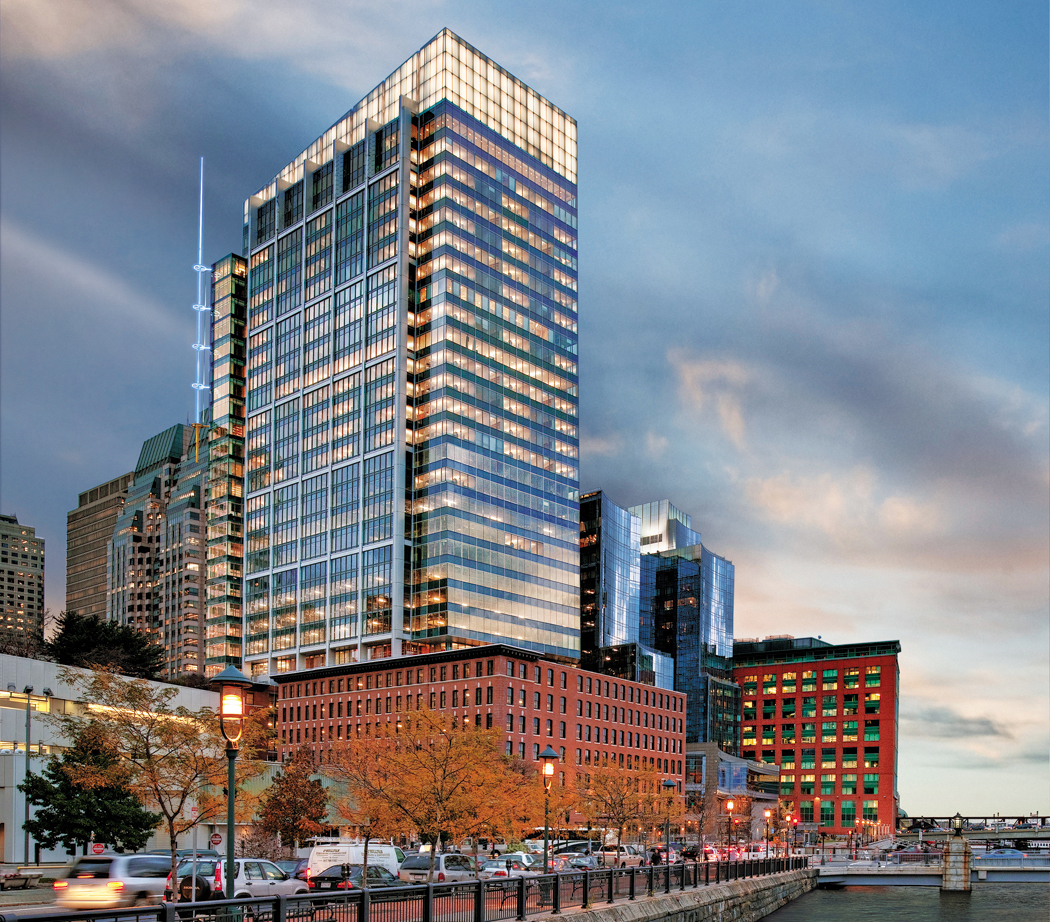
In 2012, Boston Properties led with the first green skyscraper in Boston, the 1.1 million square foot mixed-use Atlantic Wharf, which achieved LEED Platinum certification.
Leading Sustainability
Among the REITs that consistently achieve high GRESB scores, Boston Properties, one of the largest publicly-held developers and owners of Class A space in the U.S., was an early adopter of sustainability best practices.
In 2012, Boston Properties led with the first green skyscraper in Boston: the 1.1 million square foot mixed-use Atlantic Wharf, which achieved LEED Platinum certification. A more recent example completed last year is Salesforce Tower, another LEED Platinum project that is currently the highest LEED-rated skyscraper in California.
In 2015, the REIT elevated its sustainability program by setting enterprise energy, emissions, water and waste goals that have helped unify regional and asset-level efforts, according to Sustainability Director Ben Myers. Now Boston Properties can boast of one of the largest real estate sustainability programs in the U.S., covering 50 million square feet of real estate―primarily office.
Myers works with Boston Properties’ CFO, senior vice president of Finance and Planning, the Sustainability Committee and the executive team to drive more sustainable outcomes and create value for stakeholders. Myers supports project teams across the company as a green building strategist, sustainability communicator and project manager focused on distributed energy resources projects like the recently executed energy storage system at Colorado Center in Santa Monica, the largest indoor energy storage project of its kind in the United States. The 3.7-megawatthour battery capacity will store energy purchased in off-peak hours to be dispatched during the more expensive peak hours.
Myers’ job has grown to encompass a range of issues, expanding from purely environmental issues to include a larger emphasis on social issues related to how aspects of buildings― like indoor air quality, building material chemistry and access to nature and daylight quantitatively―improve customer performance. To that end, Boston Properties has become a Fitwel Champion, recently enrolling 6 million square feet in the Fitwel healthy building certification system, which scores buildings using over 55 evidence-based design and operational strategies that enhance buildings by addressing a broad range of health behaviors and risks.
“What keeps me excited about this work is the infinite learning curve. Issues continue to evolve and no two projects are alike,” said Myers. “As regions and the global community tackle complicated subjects like carbon neutrality and climate resiliency, more leaders like Boston Properties are needed to futureproof our cities.”
Climate Risks
Indeed, a new report compiled by the Urban Land Institute and real estate investment management firm Heitman looks at the need for future-proofing real estate for climate risks. The report delves into research from Heitman and climate risk analytics firm Four Twenty Seven and reveals that more than $130 billion of U.S. institutional real estate is in metro areas that rank in the top 10 percent for exposure to sea-level rise.
In addition to sea-level rise, climate-related risks include earthquake, wind, heat-level rise and resource availability. Heitman’s global research head Mary Ludgin said last year her company engaged Four Twenty Seven, one of a number of emerging providers in the climate risk assessment space, to conduct an asset-level score for each of the assets it manages―totaling $41.7 billion globally.
“A lot of the major parts of the global economy are coastal,” Ludgin explained. “We’re just trying to be clear-eyed about the rapidly changing environment and use the emerging set of tools that are at our disposal to make smart investment decisions for our clients.”
Institutionalizing ESG
Industry associations, like the National Association of Real Estate Investment Trusts, are also taking ESG seriously. NAREIT’s vice president of ESG Fulya Kocak, in fact, joined the non-profit almost three years ago to create a program to assist members in launching their own programs and to facilitate a platform to help industry leaders communicate with each other.
Governance, Kocak said, is a huge aspect of a public company, noting the challenging overlaps when some aspects of governance touch on ESG, such as board level commitment to sustainability, and when the CEO is being compensated relative to the REIT’s ESG platform.
NAREIT also hosts an annual Leader in Light Award to recognize excellence in sustainability using GRESB scores and a panel of judges across academia, government and real estate.
Buying Renewables
NAREIT also singled out Digital Realty, which operates more than 200 data center facilities globally, for its innovative power purchase agreements that allow it to source renewable energy off-site. If the REIT were to utilize its rooftops for solar energy production, that would only offset about 1 percent of the building’s energy use so it’s a challenge to scale, said Digital Realty’s Senior Director of Sustainability Programs Aaron Binkley.
The REIT’s power purchase agreements enable it to lock in long-term contracts to buy renewable power from commercially developed solar and wind farms at an appropriate scale for the size of its customer load. “The days of seeing a significant premium for renewables are now gone in key markets,” Binkley said.
Globally, the REIT is already 30 percent renewably powered though it varies by market with the EMEA region and its U.S. colocation footprint both at 100 percent. The goal is to use 100 percent renewable energy across its portfolio, Binkley said, adding the REIT also has separate energy efficiency goals across its portfolio as well.
ESG-Informed Indexes
In addition to GRESB and similar assessments, investors will now be able to make better-informed decisions with the aid of a new series of green real estate indexes developed by FTSE Russell, the index, data and analytics provider. The green indexes are an extension of the FTSE EPRA Nareit Real Estate Index Series, a global series of leading listed real estate benchmarks that are tracked by over $341 billion in assets and allow investors to integrate climate risk in their investment strategies in listed real estate, which has historically lacked such tools.
Despite the positive reception from both the media and asset managers, Campos of FTSE Russell maintains that the industry is still in the early stages when it comes to transparency around climate risks. For instance, fewer than half of listed real estate companies disclose carbon emissions data for their portfolios.
Now even small investors like financial advisors are able to invest in real estate based on ESG performance. In 2017, San Francisco-based Vert Asset Management, a dedicated ESG investment manager launched a global sustainable real estate fund, the first sustainable mutual fund in the U.S. that invests across the globe in REITs based on ESG metrics. Vert’s green real estate fund is still small at $18.5 million but continues to grow by a couple of million dollars each month, according to Vert CEO Sam Adams.
Although the fund underperformed the benchmark by 3.5 percent in its first year, Adams said sustainability is a long-term investment with a 5- to 10-year hold. More important, however, is the future and the recognition of the larger ESG sustainability movement. “And this movement isn’t reserved for the tree huggers and whale savers anymore,” Adams said. “It’s real people and real institutions investing real dollars.”

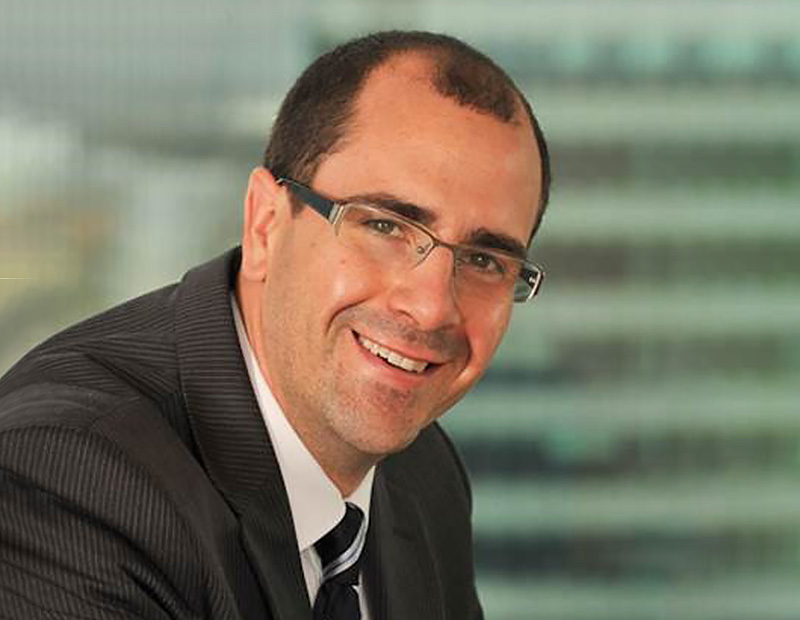
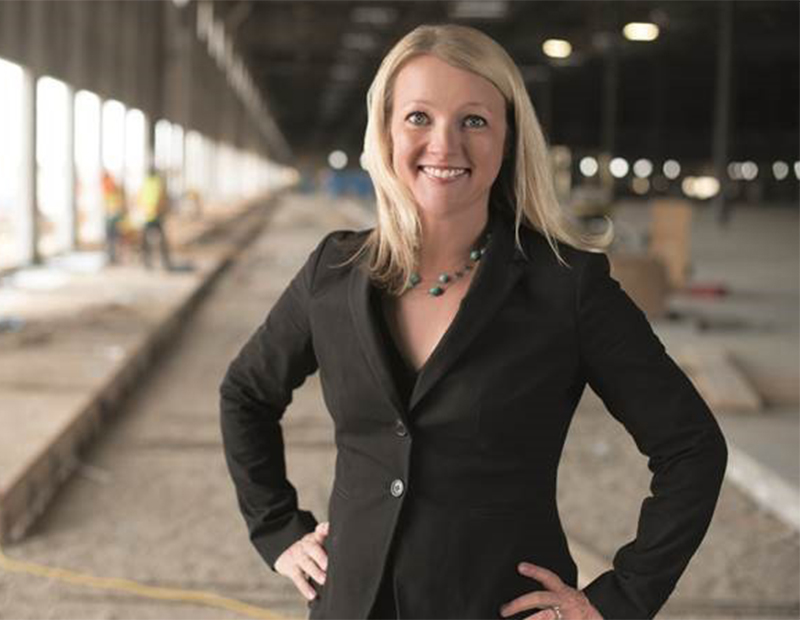
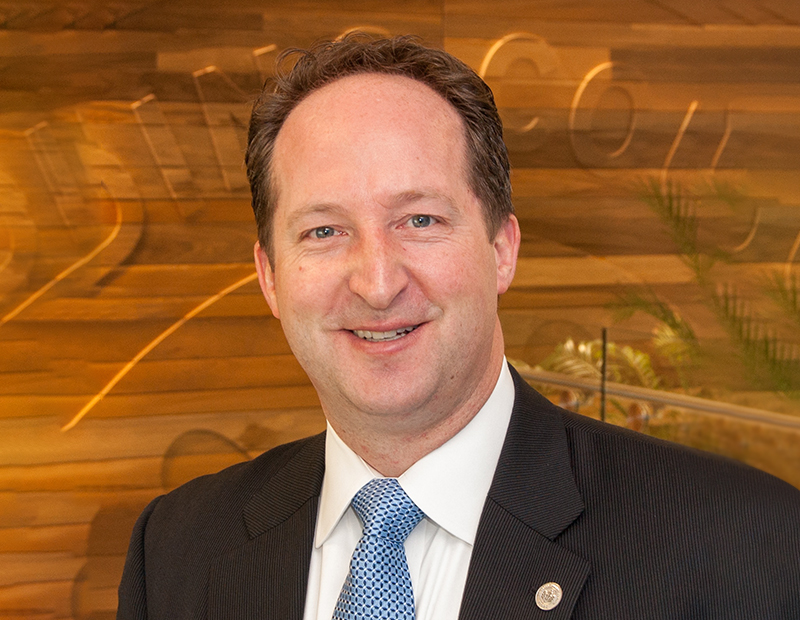
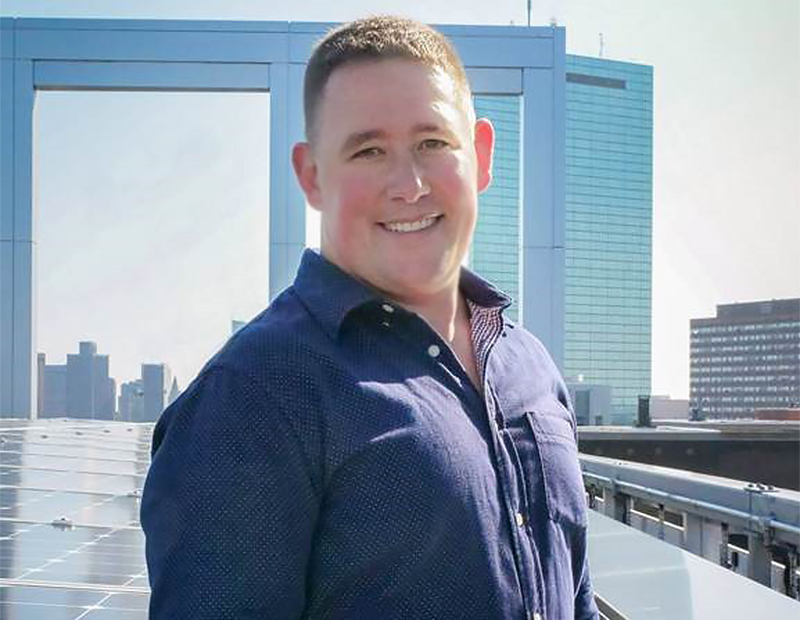

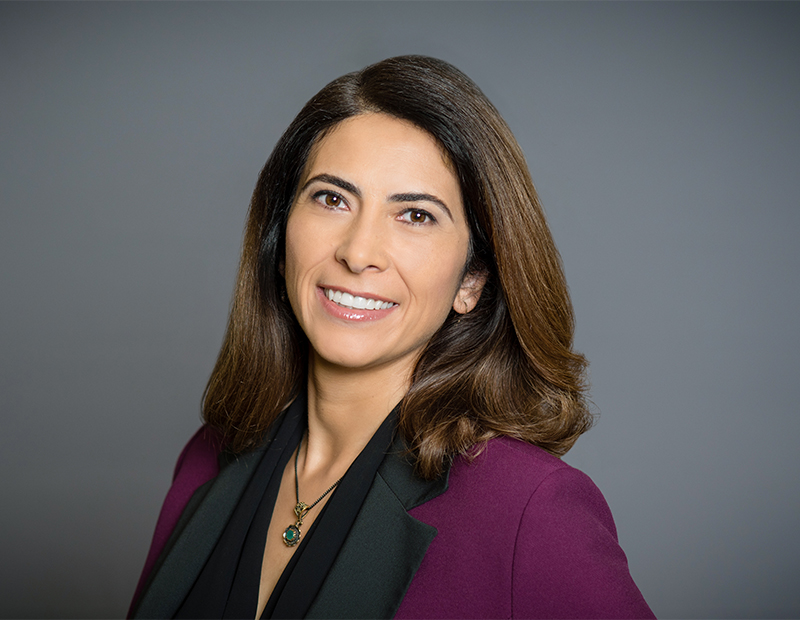
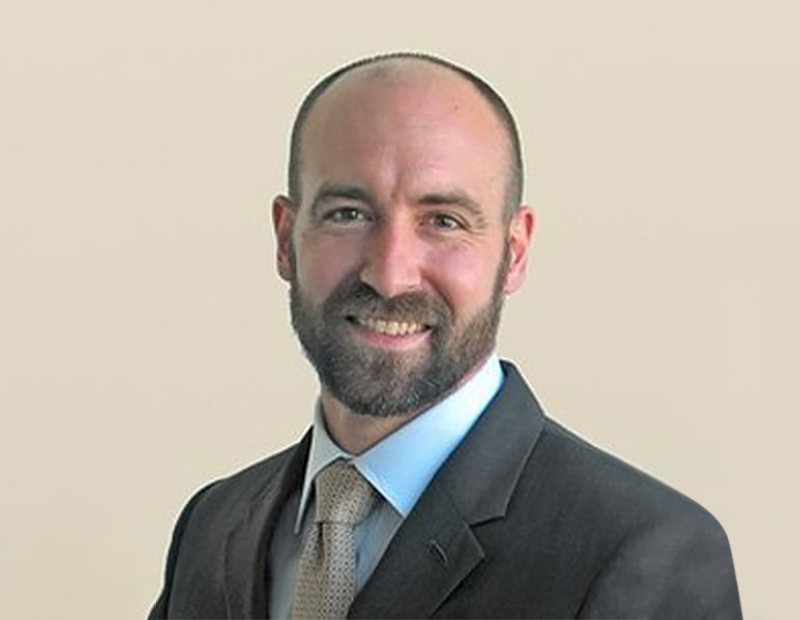








You must be logged in to post a comment.